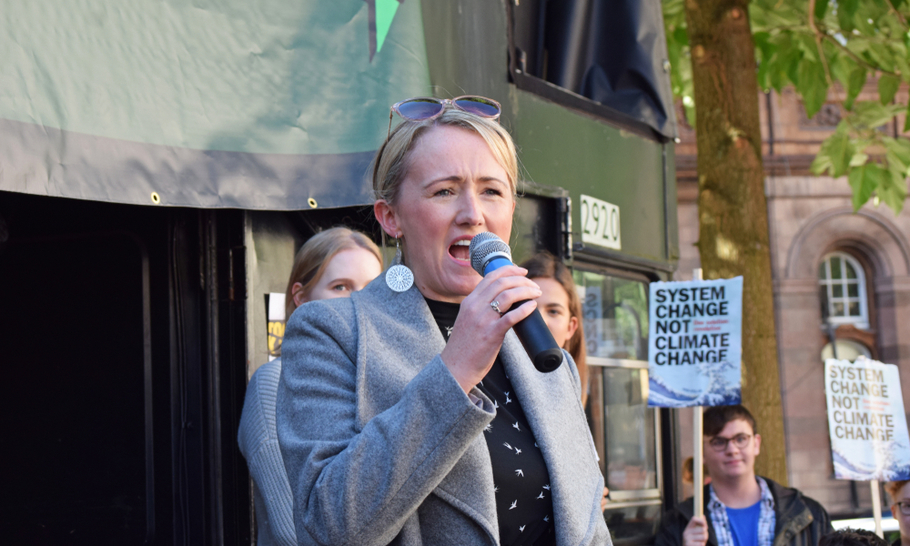Labour’s unknown candidate

Rebecca Long-Bailey, 2019. (Shutterstock)
Rebecca Long-Bailey is the most unknown person ever to emerge as a possible, indeed very possible leader of the Labour Party. The party’s system for electing a leader is now made on a preferential vote basis of all party members.
That means that Labour members put down a list of their proffered leaders. RLB, as she will come to be known, could be elected on second and third preferences as other more fancied candidates from the London lawyers and journalists dinner party circuit fall away. Around 50,000 people joined in the election campaign, enthused that after three years of wavering and fence-sitting, Corbyn was finally listening to the 79 per cent of Labour Party voters and 90 per cent of Labour conference delegates who opposed the Boris Johnson amputation from Europe.
But, as every Labour MP who lost their seat will testify, the large Corbynista party membership is not the same as committed Labour workers on the ground. As they slogged through the December rain and went down to defeat in Wolverhampton and Wakefield, Labour MPs relied on old stalwarts. The new members would turn out for a meeting to chant “Oh, Jeremy Corbyn” if he was present, but they wouldn’t do the donkeywork of door-to-door canvassing.
Instead, the 40,000-50,000 Momentum activists were sent out in platoons to campaign for preferred left candidates, and to waste time trying to unseat Boris Johnson or Iain Duncan Smith, or canvas in the safe Tory seat of Westminster for a Corbyn crony who was facing the Lib Dem challenge of Chuka Umunna, the most hated of the Labour apostates.
If RLB can remain the first choice of Momentum activists, or more importantly the 100,000 Unite trade union members who are registered to vote in a Labour leadership election, then she stands a very good chance of winning.
She would be the first solicitor to lead a major British party since Lloyd George. There have been plenty of barristers — Margaret Thatcher, Tony Blair and John Smith, as well as the two Labour leadership hopefuls from the wealthy barrister communities of Islington and Kentish Town. But RLB went to the unfashionable Manchester Metropolitan University before qualifying via part-time study as a solicitor.
Aged 40, she is a Catholic with a seven-year-old son. I have spoken to Labour MPs who serve or served in her area — she lives in Manchester, not her Salford constituency and all tell me they can’t say anything much about her.
Normally, a person who emerges as an MP in a safe Labour seat has some profile as a campaigner, a proven councillor, a candidate in an unwinnable seat, a trade union official with a good number of years getting their names known.
But RLB was politically inactive until after the 2010 election. She is believed to have joined the Labour Party only two years before she was selected, on an All-Women’s shortlist for the safe Labour seat of Salford, when Hazel Blears stood down before the 2015 election.
She went to a Unite trade union summer school and made an impression. Unite backed her to become the MP. She has been in the Commons just four years compared to the 11 years Tony Blair served before becoming Labour leader, or the 32 years Jeremy Corbyn put in as an MP before emerging as leader in 2015.
When asked what her views are, local MPs just shrug their shoulders. A fellow member of the Corbyn shadow cabinet said she was very quiet in meetings. “She worked hard on her dossiers and was on top of whatever brief John McDonnell gave her, but otherwise you wouldn’t know she was there.”
After the counter-productive decision of experienced Labour shadow cabinet members to seek to displace Corbyn in the failed 2016 putsch, he had carte blanche to reconstitute his shadow cabinet team. RLB, as all could see in her monotonous on-message television performances this year, and especially after Johnson took over, was a competent, unflashy spokesperson. She was rather like Theresa May, in her various opposition shadow cabinet posts.
In a recent Guardian article RLB finally set out her stall — it read like a beta minus effort by the former Guardian comment editor, Seumas Milne, setting out a vaguely left position with a vacuous reference to “progressive patriotism”. There is not a single indicator of what a RLB policy programme would look like.
Neil Kinnock was elected as the left-wing candidate after the 1983 defeat for Labour, which led to a renaissance of Labour as an election winning force. But that victory didn’t come under Neil Kinnock. There was more than a decade still to go in opposition.
RLB’s test will be when she has to face the hustings of Labour Party members and presumably even tougher cross-questioning from Andrew Neil.
Both David Cameron and Ed Miliband were elected Leaders of their parties after just four years in parliament, but both men were well-known and had been tested in parliament. Both were fluent writers and speakers.
By contrast, RLB is an unknown candidate — except for one thing. Once elected, the Leader of the Labour Party names her close associates, the party general secretary, and defines the party’s direction of travel. This cautious Catholic Manchester solicitor has clawed her way up from a poor background and with diligence and application steered a path through the poisonous politics of the ageing Corbyn-McDonnell-Milne-McLuskey generation that has done such damage to Labour.
That’s no mean feat and suggests steely determination. But more than that, almost nothing is known.





